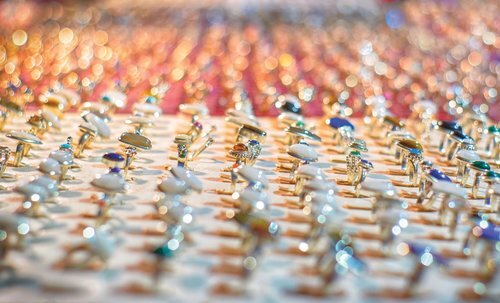The Jewelry Industry Today And The Forecast For The Future
Jewelry is more than an accessory, it speaks to who you are. Whether you slip it on every morning according to your outfit or never take your pieces off, if you wear jewelry, you often feel naked without it. Because of its ability to represent ourselves, our favorite brands, wealth, fashion sense and even love, jewelry is often revered as a powerful object. And when we look at the market today, it agrees.
A recent assessment by Orbis reveals that the jewelry sector hasn’t only shown steady growth over the last few years, but is expected to continue growing from 2019-2023. With more and more people buying online, a growing female workforce, and an increase in both the middle class as well as high net-worth individuals, steady growth is expected to drive the market forward.
But while the jewelry market is large, diverse and growing strong today, it is due to some big transformations. In fact, the market has seen incredible changes that have laid the foundation for exciting and lucrative opportunities today.
Fashion Jewelry
For decades, fashion jewelry was characterized by its affordability and lack of precious stones and metals in lieu of plated alloys and crystals. On top of that, it was considered temporary — something that would go out of style or simply not stand up to the test of time for lack of durability. But today, the rise of fast-fashion and hybrid consumption — pairing high and low-end pieces — amongst consumers is blurring these once clear standards.
For example, fashion brands like Lanvin and Roberto Cavalli now sell upscale fashion jewelry for prices upwards of thousands of euros. Then there are fashion jewelry brands that are incorporating precious metals, and although upping their price tags, falling well-below luxury jewelry prices. Some of the most interesting examples are that of the fashion jewelry brands propelled to fame by social media, like Bagatiba, who produce trendy fashion jewelry pieces in plated gold starting at under $100. Today we’re seeing the fashion jewelry market expand and hybridize like it hasn’t before, incorporating both high-end pricing with low-end materials and higher-end materials with more fast-fashion pricing.
Fine Jewelry
Forged from precious metals, precious and semi-precious stones, fine jewelry has been a part of human life for thousands of years. From the Greeks and Egyptians to medieval kingdoms, fine jewelry was used as a status symbol and in certain cases, was believed to protect the wearer. In more recent history, fine jewelry, for women in particular, was given as a gift. But starting in the 1980’s we saw a big shift in the market as women increasingly not only joined the workforce but fought their way into boardrooms and high-stakes positions. With status to uphold and money to spend, women began buying themselves fine jewelry more than ever before.
Today, fine jewelry is not only seen as a gifted status symbol but as a status symbol in itself. To this effect, the biggest growth we’re seeing in the fine jewelry sector is within branded jewelry — think traditional, like Tiffany and Cartier. While today it only accounts for 20-percent of the entire jewelry market (fashion jewelry being worth some $300-billion and fine jewelry worth nearly $42-billion, according to Visual Capitalist) it’s doubled since 2003 and industry leaders interviewed by McKinsey believe it will grow by another 30 to 40-percent by 2020.
We’ve also seen big and successful newcomers like David Yurman, Gurhan and Todd Reed carve their way into branded fine jewelry, and major high-fashion brands like Hermès and Louis Vuitton are expand their portfolio here too. As the branded jewelry industry continues with this upward trend, we expect to see more brands take their own stake in this lucrative market.
State of the jewelry market today
It’s a fun and exciting time to be in the jewelry industry. From both the fashion and fine jewelry sectors we’re seeing major growth and diversification — whether that’s exploring new materials and price points or embracing brand reputation and the timeless effect precious metals and gems will have on status. There’s room for growth and creativity for brands at all price points who want to enter this market, get in touch with our team today to learn about how you can make your mark.



